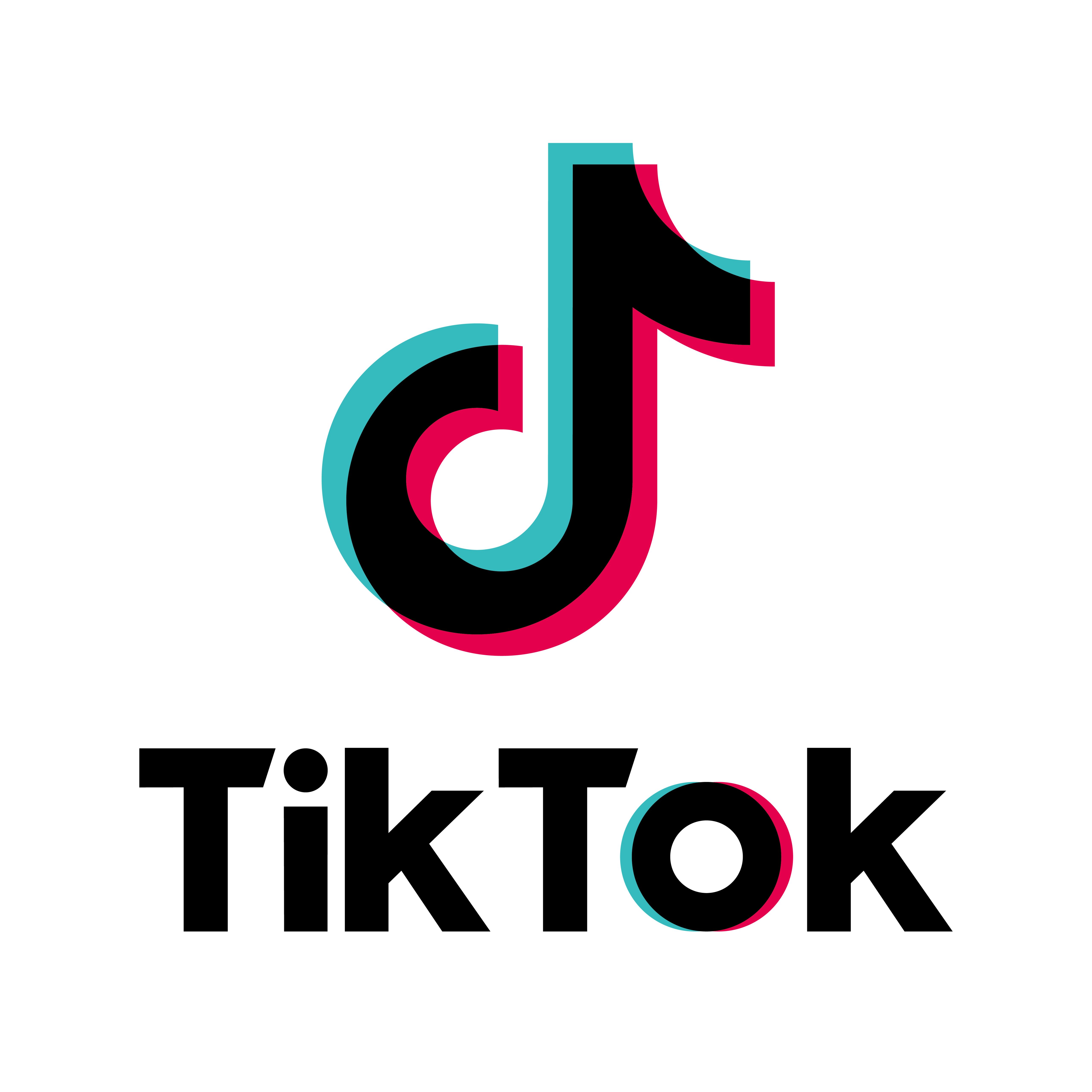
TikTok Finance Content Ideas: Level Up Your Financial Literacy Game
TikTok has exploded into a global phenomenon, captivating audiences with its short-form video format. While it’s known for dance trends and comedic skits, TikTok is also a powerful platform for education and information. Finance is no exception. With the right strategy, financial content creators can reach millions, demystify complex topics, and empower viewers to take control of their financial lives.
This article explores a wealth of TikTok finance content ideas, categorized to help you tailor your approach and create content that resonates with your target audience.
I. Foundational Finance Concepts
-
Explain Basic Terms:
- Idea: Create a series of videos explaining common financial terms like APR, ROI, inflation, diversification, etc., in simple, relatable language.
- Example: "APR Explained: Imagine APR as the price you pay to borrow money. The higher the APR, the more expensive the loan!"
- Tip: Use visuals, analogies, and humor to make the concepts memorable.
-
Budgeting 101:
- Idea: Share practical budgeting tips, methods (like the 50/30/20 rule), and tools (budgeting apps, spreadsheets).
- Example: "The 50/30/20 Rule: 50% for needs, 30% for wants, 20% for savings/debt repayment. Track your spending for a week to see where your money is going!"
- Tip: Show real-life examples of how budgeting can help achieve financial goals.
-
Saving Strategies:
- Idea: Offer creative saving challenges (e.g., the 52-week challenge, no-spend weekends), tips for automating savings, and ways to cut expenses.
- Example: "The Latte Factor: Skipping that daily latte can save you hundreds each year. Invest that money instead!"
- Tip: Make saving fun and rewarding. Highlight the potential long-term benefits.
-
Debt Management:
- Idea: Discuss different types of debt (credit card, student loans, mortgages), strategies for paying off debt (debt snowball, debt avalanche), and the importance of managing credit.
- Example: "Debt Snowball vs. Debt Avalanche: Snowball focuses on paying off the smallest debt first for quick wins, while Avalanche targets the highest interest rates to save money in the long run."
- Tip: Be empathetic and offer practical advice.
-
Credit Scores:
- Idea: Explain what credit scores are, how they’re calculated, and how to improve them.
- Example: "Your Credit Score: It’s like your financial report card. Pay bills on time, keep credit utilization low, and avoid opening too many accounts at once."
- Tip: Debunk common myths about credit scores.
II. Investing for Beginners
-
Introduction to Investing:
- Idea: Explain the basics of investing, different asset classes (stocks, bonds, mutual funds, ETFs), and the importance of starting early.
- Example: "Investing 101: Think of investing as planting a seed. Over time, with the right care, it can grow into a tree that provides fruit (returns)."
- Tip: Simplify complex concepts and use relatable examples.
-
Choosing Investments:
- Idea: Discuss how to research and select investments, considering risk tolerance, time horizon, and financial goals.
- Example: "Risk Tolerance: Are you comfortable with the possibility of losing money? Higher risk can mean higher potential returns, but also higher potential losses."
- Tip: Emphasize the importance of diversification and long-term investing.
-
Investing Apps and Platforms:
- Idea: Review popular investing apps and platforms, highlighting their features, fees, and suitability for different types of investors.
- Example: "Robinhood vs. Fidelity: Robinhood is known for its user-friendly interface and commission-free trading, while Fidelity offers more research tools and a wider range of investment options."
- Tip: Disclose any affiliations or sponsorships.
-
Compound Interest:
- Idea: Illustrate the power of compound interest and how it can help grow wealth over time.
- Example: "Compound Interest: It’s like a snowball rolling downhill. The bigger it gets, the faster it grows."
- Tip: Use visual aids and real-life examples to demonstrate the impact of compound interest.
-
Retirement Planning:
- Idea: Discuss different retirement savings plans (401(k), IRA), how to calculate retirement needs, and strategies for maximizing retirement savings.
- Example: "401(k) vs. IRA: A 401(k) is typically offered by employers, while an IRA is an individual retirement account. Both offer tax advantages."
- Tip: Encourage viewers to start planning for retirement early, even if they can only save a small amount.
III. Personal Finance Hacks and Tips
-
Money-Saving Challenges:
- Idea: Create fun and engaging money-saving challenges, such as the "no-spend month" or the "52-week saving challenge."
- Example: "No-Spend Month: Challenge yourself to avoid unnecessary spending for a month. You’ll be surprised how much you can save!"
- Tip: Offer tips and tricks for succeeding in the challenge.
-
Negotiation Skills:
- Idea: Share tips on how to negotiate prices, salaries, and other financial matters.
- Example: "Negotiating Your Salary: Research industry standards, highlight your accomplishments, and be confident in your worth."
- Tip: Provide scripts and examples to help viewers practice their negotiation skills.
-
Side Hustles:
- Idea: Showcase different side hustle ideas, such as freelancing, online tutoring, or selling products online.
- Example: "Top 5 Side Hustles: Freelance writing, virtual assistant, online tutoring, selling crafts on Etsy, and driving for a rideshare service."
- Tip: Offer advice on how to start and succeed in each side hustle.
-
Couponing and Discounts:
- Idea: Share tips on how to find coupons, discounts, and deals on everyday purchases.
- Example: "Couponing Secrets: Use coupon websites, sign up for email lists, and follow your favorite brands on social media."
- Tip: Show viewers how to stack coupons and maximize savings.
-
Financial Wellness:
- Idea: Discuss the importance of financial wellness and how to manage stress related to money.
- Example: "Financial Wellness: It’s about more than just money. It’s about your relationship with money and how it impacts your overall well-being."
- Tip: Offer tips for managing financial stress, such as setting financial goals, creating a budget, and seeking professional help if needed.
IV. Trends and Current Events
-
News Commentary:
- Idea: Provide your perspective on current financial news and events, such as interest rate changes, stock market fluctuations, and economic reports.
- Example: "Interest Rates Hike: What does it mean for your mortgage, savings, and investments?"
- Tip: Explain the implications of these events in a clear and concise manner.
-
Trend Analysis:
- Idea: Analyze emerging financial trends, such as cryptocurrency, NFTs, and the metaverse.
- Example: "NFTs Explained: Are they the future of digital art or just a fad?"
- Tip: Offer insights into the potential risks and rewards of these trends.
-
Meme Finance:
- Idea: Use humor and memes to explain complex financial concepts or to comment on current financial events.
- Example: "When the stock market crashes and you remember you diversified your portfolio." (accompanied by a relevant meme)
- Tip: Be creative and use humor to engage your audience.
V. Engagement and Interaction
-
Q&A Sessions:
- Idea: Host live Q&A sessions to answer viewers’ questions about personal finance.
- Example: "Ask Me Anything about Investing!"
- Tip: Promote the Q&A session in advance and be prepared to answer a wide range of questions.
-
Challenges and Contests:
- Idea: Create financial challenges and contests to encourage viewers to take action and improve their financial habits.
- Example: "The #Save100Challenge: Challenge yourself to save $100 this month and share your progress with the hashtag."
- Tip: Offer prizes to the winners.
-
Duets and Stitches:
- Idea: Use TikTok’s duet and stitch features to respond to other creators’ videos or to add your own commentary to existing content.
- Example: "Duet with a video about budgeting and add your own tips."
- Tip: Be respectful and add value to the conversation.
Tips for Success on TikTok Finance:
- Keep it Short and Sweet: TikTok videos are short, so get straight to the point.
- Use Visuals: Use graphics, charts, and other visuals to make your content more engaging.
- Be Authentic: Be yourself and share your own experiences.
- Engage with Your Audience: Respond to comments and questions.
- Be Consistent: Post regularly to keep your audience engaged.
- Use Hashtags: Use relevant hashtags to reach a wider audience.
- Stay Updated: Keep up with the latest financial news and trends.
- Disclaimers: Always include disclaimers when providing financial advice.
Conclusion:
TikTok is a goldmine for financial literacy content. By creating engaging, informative, and entertaining videos, you can reach millions of people and help them improve their financial lives. Start experimenting with these ideas and find what works best for you and your audience. Remember, the key is to make finance fun, accessible, and empowering.



